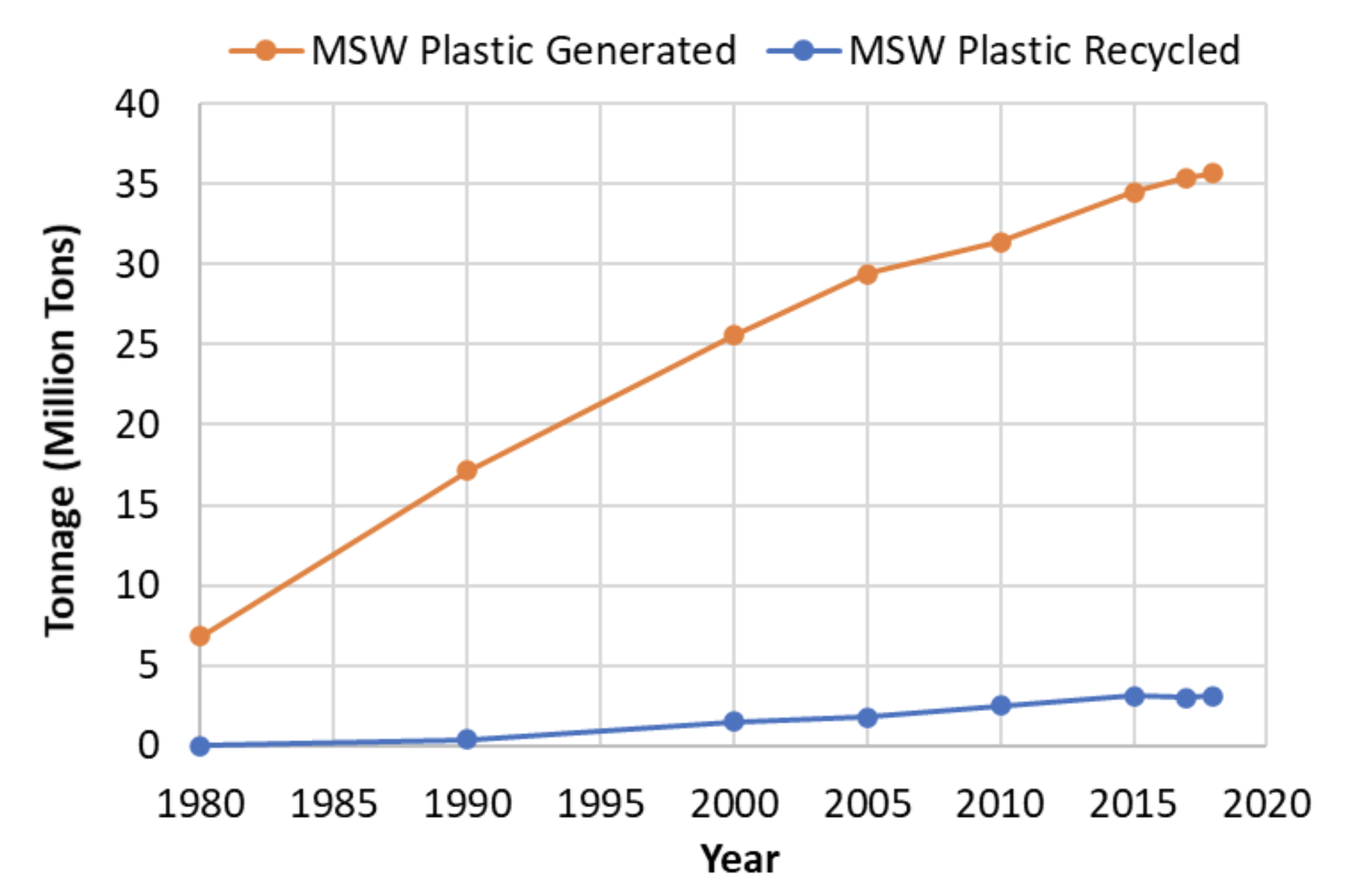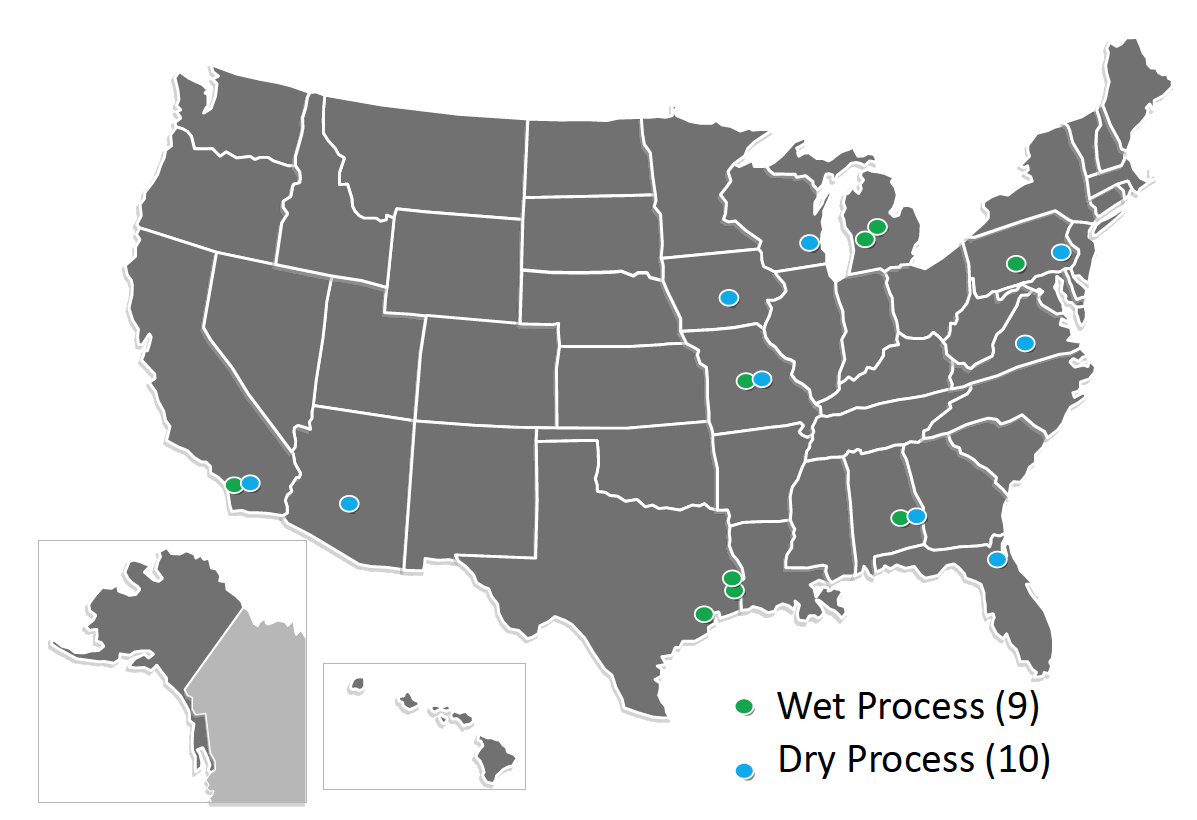- Spring 2022
NCAT Research on Use of Recycled Plastics in Asphalt
Since China’s prohibition of imported waste plastics in 2017, the U.S. plastics industry has been exploring new end-market applications for over 30 million tons of waste plastics generated every year. Potential uses include asphalt pavements, plastic composites, concrete, and wood composites. Marketing claims and media attention have stated that using waste plastics in asphalt can improve the performance of asphalt pavements while eliminating the plastic waste crisis. Although this idea appears to provide a win-win situation, it remains unknown whether the expected benefits can be fully achievable in practice.
In fact, the use of plastics in asphalt is a not new concept. The first reported use dates to the 1970s in Europe, where high-density polyethylene (HDPE) was used in Gussasphalt for pourable asphalt mixture applications. During the 1990s, considerable research efforts and field trials were devoted to two proprietary plastic modified asphalt products, namely Novophalt® and Polyphalt®. Novophalt® was demonstrated on projects in nearly 20 countries, but it did not gain acceptance into mainstream practice due to field performance issues and practical challenges with implementation. Polyphalt®, on the other hand, showed promising laboratory results but was not a commercial success due to economic and performance limitations.
In 2019, the National Asphalt Pavement Association (NAPA) and Asphalt Institute (AI) established a joint task force on recycled plastics consisting of 15 members affiliated with various stakeholders in the asphalt industry. The task force contracted with NCAT to conduct a literature review and knowledge gap analysis on the use of recycled plastics in asphalt. Through this effort, NCAT researchers reviewed over 110 literature documents published between 1991 and 2020 and prepared an executive summary of the findings to present the ‘knowns’ and ‘unknowns’ for a wide range of topics related to the use of recycled plastics in asphalt. An annotated bibliography was also developed for each literature document to discuss its scope of work, findings, and recommendations. The executive summary and synthesis were published as a two-part NAPA document (IS-142) in October 2020. The information was recently expanded with 40 additional articles in the Phase I interim report of the ongoing National Cooperative Highway Research Program (NCHRP) Project 09-66.
The literature review found that approximately 35.7 million tons of waste plastics were generated in the U.S. in 2018, which accounted for 12.2% of municipal solid waste (MSW) generation. According to the Environmental Protection Agency (EPA), in 2017, polypropylene (PP) was the most common type of MWS plastic at 32.1% followed by polyethylene (PE) at 29.2%. Figure 1 presents the tonnage of total MWS plastics generated and recycled from 1980 to 2018. In 2015, recycling of MWS plastics reached approximately 3.1 million tons, a recycling rate of 9.0%. Currently, the vast majority of MSW plastics are combusted with energy recovery or landfilled.
Figure 1. Tonnage of Generated and Recycled MSW Plastics from 1980 to 2020 (EPA)
One frequently asked question is, “How much recycled plastic can be used in asphalt?” The answer depends on which method is used— the wet process or the dry process. In the wet process, recycled plastics are added into the asphalt binder as polymer modifier or asphalt replacement, which requires mechanical mixing and, in some cases, additional compatibilizers to achieve and maintain a homogeneous modified binder blend. In the dry process, recycled plastic is added directly into the mixture as either aggregate replacement, mixture modifier, binder modifier, or any combination of these. Reported dosages for the wet process range from approximately 1 to 12% by weight of asphalt binder, while for the dry process, the dosage varies from approximately 0.2 to 6% by weight of aggregate. Using the middle of these ranges indicates that the dry process can use up to 10 times more recycled plastics than the wet process.
Given that approximately 400 million tons of asphalt mixtures are produced each year in the U.S. and optimistically assuming 25% of these mixtures could be modified with recycled plastics via the dry process at an average dosage of 3% by weight of aggregate, approximately 2.8 million tons of recycled plastics could be consumed in asphalt pavements annually, which accounts for less than 10% of the total MSW plastics generated each year. This optimistic example highlights the fact that the possible use of recycled plastics in asphalt would not eliminate the growing amount of waste plastics being generated.
Form the literature review, 19 field projects were identified that used asphalt mixtures containing recycled plastic in the U.S. since 2018, as shown in Figure 2. Among these projects, nine used the wet process of adding recycled plastics while the rest used the dry process. Most of these were commercial projects for parking lots and private roads. The two projects in Alabama represent test sections on the NCAT Test Track, which were constructed in September 2021 as part of the NCAT-MnROAD Additive Group (AG) experiment.
Figure 2. Map of Recent Field Projects using RPM Mixtures in the U.S.
The AG experiment is a continuation of the successful partnership between NCAT and MnROAD to address national needs in asphalt research. The AG experiment includes three types of asphalt additives: recycled plastics, recycled tire rubber, and a synthetic fiber. A total of six structural test sections with a research focus on fatigue cracking were constructed on the NCAT Test Track, including two using mixtures containing recycled plastics— one using the wet process and the other using the dry process. The mixtures used the same post-consumer recycled plastic containing mostly linear low-density polyethylene that was supplied by a plastic recycler in Texas, but at distinctly different dosages for the wet process versus the dry process. The wet process also contained a reactive polymer to aid in compatibilization of the plastic in the binder.
The test sections will be subjected to 10 million ESALs of accelerated traffic loading over a two-year period, and the structural response and pavement performance of those sections will be monitored. A comprehensive laboratory testing plan and modeling effort on the plant produced mixtures sampled during construction is also underway. A complementary experiment will be constructed this summer at MnROAD to evaluate resistance to reflection and thermal cracking. NCAT researchers and MnROAD engineers are working with several industry partners to evaluate different recycled plastic additives (and other types of additives) for potential use in construction of MnROAD test sections through a laboratory study. The NCAT-MnROAD AG experiment is believed to be the first field experiment in the world that evaluates the use of recycled plastics in asphalt based on accelerated pavement testing.

For more information about this article, please contact Fan Yin.